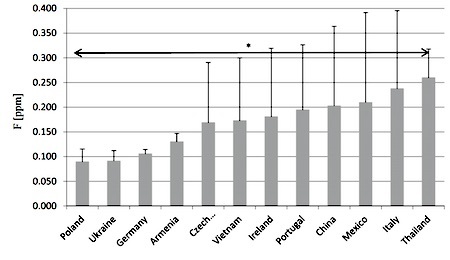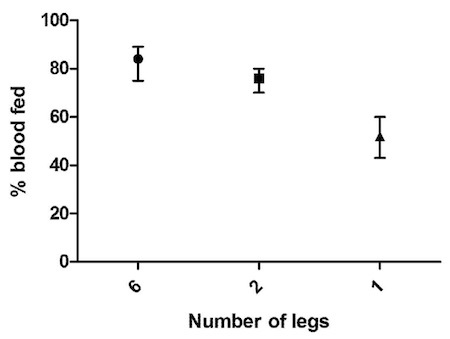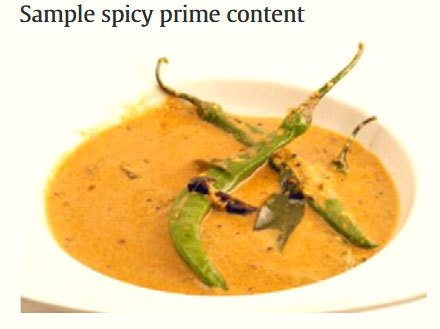Marc Abrahams's Blog, page 220
May 26, 2017
The delicious effect of espresso foam [research study]
Two scientists in Japan studied how the foam on a fresh cup of espresso makes that drink so thermodynamically delicious. My “Improbable Research” column on the RealClearLife web site gives details. It begins:
What’s not so hot about hot coffee —no matter how much you love it — is how quickly it cools.
Two Japanese scientists noticed that espresso has an advantage over plain coffee, in maintaining the right temperature. So they poured into some research to get to the bottom of the phenomenon. Their newly published study tells how and why espresso lets a drinker linger longer over a cuppa…
BONUS: The RealClearLife column is new. The first item I did for it is about whether time seems to stand still when you are in a Mercedes-Benz automobile that crashes.

Beer is a Rich Source of Flouride — Anti-Flouridation Forces Take Note!
The international campaign against adding flouride to public water supplies has just had a monkey wrench thrown into their works. A new study reports that flouride is in the beer supply, in considerable amounts. The study is:
“Beer as a Rich Source of Fluoride Delivered into the Body,” D. Styburski, I. Baranowska-Bosiacka, M. Goschorska, D. Chlubek, and I. Gutowska, Biological Trace Element Research, 2016, pp. 1-5. (Thanks to Ivan Oransky for bringing this to our attention.) The authors, at Pomeranian Medical University, Poland, report:
“Beer is the most popular alcoholic beverage in the world. Due to its prevalence and volume of consumption, it should be considered as a potential source of F- and taken into account in designing a balanced diet. Therefore, the aim of this study was to analyze beer samples in terms of F- levels…. When compared to imported beers, Polish beers were characterized by the lowest mean F- concentration (0.089 ppm). The highest mean F- concentrations were recorded in beers from Thailand (0.260 ppm), Italy (0.238 ppm), Mexico (0.210 ppm), and China (0.203 ppm). Our study shows that beer is a significant source of fluoride for humans, which is mainly associated with the quality of the water used in beer production.”
This chart, from the study, shows “Fluoride mean concentration and SD in beers from different countries. (Statistical significant differences p ≤ 0.05)”:

The vast weight of scientific investigation finds that small extra amounts of flouride improves public health. But… anti-flouride campaigners worry that adding flouride to public water supplies —though intended to help improve the teeth and bones of the people who drink that water — might in some way instead poison everyone. That worry is deep-seated:
The disturbing there’s-flouride-in-our-beer newsdifficulty for the anti-flouridation forces comes not long after seemingly happy news: a study showing that chocolate and tea might be better than flouride at protecting teeth. That study is:
“Theobromine: A Safe and Effective Alternative for Fluoride in Dentifrices,” Nakamoto Tetsuo, Alexander U. Falster, and William B. Simmons, Jr., Journal of Caffeine Research. vol. 6, no. 1, February 2016, pp. 1-9. The authors, at Louisiana State University Health Sciences Center and at the Maine Mineral and Gem Museum, Bethel, Maine, explain:
“During the process of studying caffeine’s effects on developing teeth, a serendipitous discovery was made. Teeth comprise hydroxylapatite (HAP). Ingestion of caffeine (1,3,7-trimethylxanthine) caused the formation of smaller crystallites of HAP in the developing teeth. This resulted in the increased release of calcium and phosphorus ions from the enamel surface when exposed to acidic solutions in vitro. Furthermore, animal study confirmed the hypothesis that smaller HAP crystallites caused the increased incidence of dental caries. In contrast, theobromine (3,7-dimethylxanthine), which is similar to caffeine, caused formation of larger HAP crystallites in vitro. The ingestion of theobromine by lactating dams showed a decreased release of calcium and phosphorus ions from the enamel surface in the developing teeth of neonates in vivo. The use of fluoride dentifrices is controversial. It is also well documented that young children who brush their teeth often ingest fluoride-containing dentifrices. Based upon our comparative study between fluoride and theobromine, theobromine is a better alternative than fluoride. We believe that theobromine can be used as an ingredient of dentifrices and even if swallowed accidentally, there are no adverse effects.”

European Goo
European goo gets a good going over, intellectually, in this marginal paper:
 “Black Goo: Forceful Encounters with Matter in Europe’s Muddy Margins,” Stuart McLean [pictured here], Cultural Anthropology, vol. 26, no. 4, 2011, pp. 589–619. The author, at the University of Minnesota, explains;
“Black Goo: Forceful Encounters with Matter in Europe’s Muddy Margins,” Stuart McLean [pictured here], Cultural Anthropology, vol. 26, no. 4, 2011, pp. 589–619. The author, at the University of Minnesota, explains;
“This essay undertakes an evocative conjuration of alternative visions of materialism through consideration of intermediary states of matter. Specifically, it focuses on gelid, semi-liquid, semi-solid environments such as bogs, swamps and marshes lying on the fringes of human settlement and against which the claims of reason and historical progress have often been staked. The paper juxtaposes ethnographic and historical examples from Ireland, Italy, Scandinavia and Siberia with reflections on (amongst others) Bachofen, Bataille and Hegel. In doing so it seeks both to explore the limits of certain canonical formulations of historicity and historical knowledge and to ask what new cultural and political imaginaries and what possible futures might become thinkable through a more sustained engagement with the recalcitrant materiality of Europe’s muddy margins.”

May 25, 2017
Shouting and Cursing while Driving (a new study)
Researchers Francisco Alonso, Cristina Esteban, Andrea Serge and Mª Luisa Ballestar at INTRAS (University Research Institute on Traffic and Road Safety), University of Valencia, Spain, have performed a new study on shouting and cursing whilst driving.
“The aim of this study was to describe the factors and perceptions related to aggressive behavior of verbally insulting and shouting out while driving. In this study, it was described an extensive list of behaviors that experts consider more or less unanimously as ‘aggressive driving’, one of them described as shouting and insult.”
“If we find that a person shouting and insult, one may be inclined to imitate such behavior in order to reach their destination before. In this sense, we might consider aggressive driving as a form of self-behavior of our culture, ingrained since childhood, learned first observed as passenger behavior of older people, and later put into practice, it is reinforced by the media communication. It has not to be forgotten the fact that in our society there is a widespread tendency to represent the vehicle as a private territory on the road, a kind of home on wheels moving with oneself and whose integrity must be maintained at all costs. In this sense it seems justifiable to point out that the aggressive impulse may represent innate feelings of territorial rights, serving as a basis for many dangerous and inconsiderate behavior on the roads.”
See [open access]: ‘Shouting and Cursing while Driving: Frequency, Reasons, Perceived Risk and Punishment’ in the Journal of Sociology and Anthropology, 2017, Vol. 1, No. 1, pp. 1-7

May 24, 2017
LIMERICK CONTEST: Cigarettes in a Milkshake
This month’s contest — Devise a pleasing limerick that encapsulates this study:
“The Smoking Milkshake,” Jennifer Thomas and Paul E. Luebbers, American Journal of Health Education, vol. 40, no. 6, 2009, pp. 322-328. The authors, at Emporia State University, explain:
“Cigarettes can have many ingredients. Philip Morris, the nations largest cigarette manufacturer, uses over 200 ingredients in the production of their cigarettes (Figure 1). Distribute the Cigarette Ingredients/Effects Worksheet (Figure 3), and explain that using several of the listed ingredients, they, as a class, will assist the teacher in making a ‘Smoking Milkshake.’ ”
(This limerick contest appears in the May 2017 issue of mini-AIR, our newsletter of bits too tiny to fit in the magazine. A new limerick contest appears every month. You can sign up to receive mini-AIR by email, if you like!)

May 23, 2017
Malaria Mosquitoes Can Get the Job Done When Missing Five Legs
If you are a malaria mosquito, and worry about insecticides that might cause you to lose one, two, three, four, or five of your six legs would also cause you to miss a meal of human blood… well, maybe you can ease up, a bit, on that particular worry. That’s what this new study suggests, when viewed from the perspective of an Anopheles gambiae mosquito:
 “Insecticide-induced leg loss does not eliminate biting and reproduction in Anopheles gambiae mosquitoes,” Alison T. Isaacs [pictured here], Amy Lynd, and Martin J. Donnelly, Scientific Reports, vol. 7, 2017. The authors, at the Liverpool School of Tropical Medicine and the Wellcome Trust Sanger Institute, report:
“Insecticide-induced leg loss does not eliminate biting and reproduction in Anopheles gambiae mosquitoes,” Alison T. Isaacs [pictured here], Amy Lynd, and Martin J. Donnelly, Scientific Reports, vol. 7, 2017. The authors, at the Liverpool School of Tropical Medicine and the Wellcome Trust Sanger Institute, report:
“Recent successes in malaria control have been largely attributable to the deployment of insecticide-based vector control tools such as bed nets and indoor residual spraying. Pyrethroid-treated bed nets are acutely neurotoxic to mosquitoes, inducing symptoms such as loss of coordination, paralysis, and violent spasms. One result of pyrethroid exposure often seen in laboratory tests is mosquito leg loss, a condition that has thus far been assumed to equate to mortality, as females are not expected to blood feed. However, whilst limb loss is unlikely to be adaptive, females with missing limbs may play a role in the propagation of both their species and pathogens. To test the hypothesis that leg loss inhibits mosquitoes from biting and reproducing, mosquitoes with one, two, or six legs were evaluated for their success in feeding upon a human.
 “These experiments demonstrated that insecticide-induced leg loss had no significant effect upon blood feeding or egg laying success. We conclude that studies of pyrethroid efficacy should not discount mosquitoes that survive insecticide exposure with fewer than six legs, as they may still be capable of biting humans, reproducing, and contributing to malaria transmission.”
“These experiments demonstrated that insecticide-induced leg loss had no significant effect upon blood feeding or egg laying success. We conclude that studies of pyrethroid efficacy should not discount mosquitoes that survive insecticide exposure with fewer than six legs, as they may still be capable of biting humans, reproducing, and contributing to malaria transmission.”
(Thanks to Tony Tweedale for bringing this to our attention.)

May 22, 2017
Nose-Raising, Nose-Lengthening and Grimacing (facial actions study)
Researcher Paul Zeichner (artist, illustrator and educator) adds to the literature regarding the documented lists of human facial actions, with the observation that “Seldom-mentioned facial movements referred to here as nose-lengthening and grimacing should also be recognized in related patterns of expression.”

May 18, 2017
Can eating hot and spicy food lead to heated debates? (new study)
“Imagine that you have an upcoming meeting with a confrontational colleague. You need to be at your aggressive best in order to not be run over during the meeting. What type of food do you think would help you best prepare for this meeting?
a. Hot & spicy food
b. Neither hot & spicy, nor bland & mild food
c. Bland & mild food”
 This is a question* posed by Professor Rishtee K. Batra, and Professor Tanuka Ghoshal of the Department of Marketing, Indian School of Business, Hyderabad, India, along with Professor Rajagopal Raghunathan of the Department of Marketing, McCombs School of Business, University of Texas at Austin, US, in a new paper for the Journal of Experimental Social Psychology, Volume 71, July 2017, Pages 42–48. It’s entitled: ‘You are what you eat: An empirical investigation of the relationship between spicy food and aggressive cognition’
This is a question* posed by Professor Rishtee K. Batra, and Professor Tanuka Ghoshal of the Department of Marketing, Indian School of Business, Hyderabad, India, along with Professor Rajagopal Raghunathan of the Department of Marketing, McCombs School of Business, University of Texas at Austin, US, in a new paper for the Journal of Experimental Social Psychology, Volume 71, July 2017, Pages 42–48. It’s entitled: ‘You are what you eat: An empirical investigation of the relationship between spicy food and aggressive cognition’
A series of three experimental studies revealed (amongst other things) that :
“ – the link between spicy food and aggressive cognition appears quite robust.“
The findings, say the team, suggest some interesting questions that could be explored in future research :
“ – such as, whether the incidents of altercations or heated debates is greater in countries or households that consume spicier (vs. less spicy) food. In a related vein, it would be interesting to explore whether customers more likely to engage in aggressive behaviors (e.g., lodge complaints, spread negative word of mouth, or offer lower tips) in contexts (e.g., restaurants), that serve more (vs. less) spicy food. Interesting implications emerge for regulating children’s behaviors too. Parents could presumably find it easier to discipline children by lowering the spiciness of their food. Likewise, teachers may find it easier to regulate students’ behaviors by controlling the levels of spice served in the cafeterias.”
A full copy of the paper may be found here.
ɐ) : ɹǝʍsu∀*

May 16, 2017
No Baby Boom Following Fifty Shades of Grey
Anticipation caused by the book Fifty Shades of Grey (and its sequels) may have led to disappointment, suggests this new medical report:
“No baby booms or birth sex ratio changes following Fifty Shades of Grey in the United States,” Victor Grech, Early Human Development, vol. 110, July 2017, pp. 16-20. The author, at Mater Dei Hospital, Malta, reports:
 “The Fifty Shades of Grey (FSOG) trilogy were publicised by the media as inflaming increased coital activity, and that this would result a baby boom. Furthermore, increased coital activity skews the sex ratio at birth (M/T) toward male births. This study was carried out in order to ascertain whether there were any spikes in total births or in M/T in the United States (US) circa nine months following the FSOG books.”
“The Fifty Shades of Grey (FSOG) trilogy were publicised by the media as inflaming increased coital activity, and that this would result a baby boom. Furthermore, increased coital activity skews the sex ratio at birth (M/T) toward male births. This study was carried out in order to ascertain whether there were any spikes in total births or in M/T in the United States (US) circa nine months following the FSOG books.”
Grech obtained and interpreted a large amount of childbirth data:
“Monthly male and female births for the US were obtained directly from the website of the Centre for Disease Control (01/2007–12/2015). This study analysed 36,499,163 live births (M/T 0.5117, 95% CI 0.5116–0.5119). There are no discernible spikes in total births or M/T at annual level, or circa nine months after FSOG book releases i.e. 04/2012 and 01/2013….”
Grech draws a conclusion:
“This study highlights the importance of measurement of cause and effect since anticipated results may not always ensue from events.”
(Thanks to Gwinyai Masukume for bringing this to our attention.)
BONUS: Victor Grech is also known for his study “Infertility in Star Trek.”

May 15, 2017
The Logic of Absurdity – and the puzzle of leadership irrelevance
“Leaders are often thought to be instrumental to the performance of the organizations they lead. However, considerable research suggests that their influence over organizational performance might actually be minimal. These claims of leader irrelevance pose a puzzle: If leaders are relatively insignificant, why would someone commit to leading?”
 Taking steps towards explaining the puzzle, Daniel Newark (Assistant Professor of Management and Human Resources at HEC [‘Ecole des Hautes Etudes Commerciales’] Paris, France) introduces the idea of the ‘Logic of Absurdity’ in a new paper for the Academy of Management Review. The ‘Logic of Absurdity’ is, in essence :
Taking steps towards explaining the puzzle, Daniel Newark (Assistant Professor of Management and Human Resources at HEC [‘Ecole des Hautes Etudes Commerciales’] Paris, France) introduces the idea of the ‘Logic of Absurdity’ in a new paper for the Academy of Management Review. The ‘Logic of Absurdity’ is, in essence :
“- a decision-making process that can sustain devoted leadership when leaders’ import is negligible. By acknowledging expected insignificance and meeting it with unmerited dedication, absurd leaders maintain their astuteness while tapping into the resilience and freedom of rationally unjustified choice. “
viz. by way of a summary of the current state of affairs :
“Scholars disagree about the fundamental influence and import of leaders. Some claim that their significance is sizable. And an abundance of books, articles, talks, and courses about leadership bolsters this view. Others claim that leaders hardly matter, deeming academics and quasi-academics who say otherwise peddlers of modern day alchemy, proffering fool’s gold to the organizational monarchy and all who wish to be crowned. And still others call for nuance and contingency, responding with a qualified, ‘it depends’.”
See: Leadership and the Logic of Absurdity in Academy of Management Review, pre-print online February 2, 2017
Bonus assignment [optional] : Working on the assumption that leaders can’t exist without followers, is the implication that followers also obey the Logic of Absurdity?
Also see : The Mathematics of Mediocracy

Marc Abrahams's Blog
- Marc Abrahams's profile
- 14 followers







